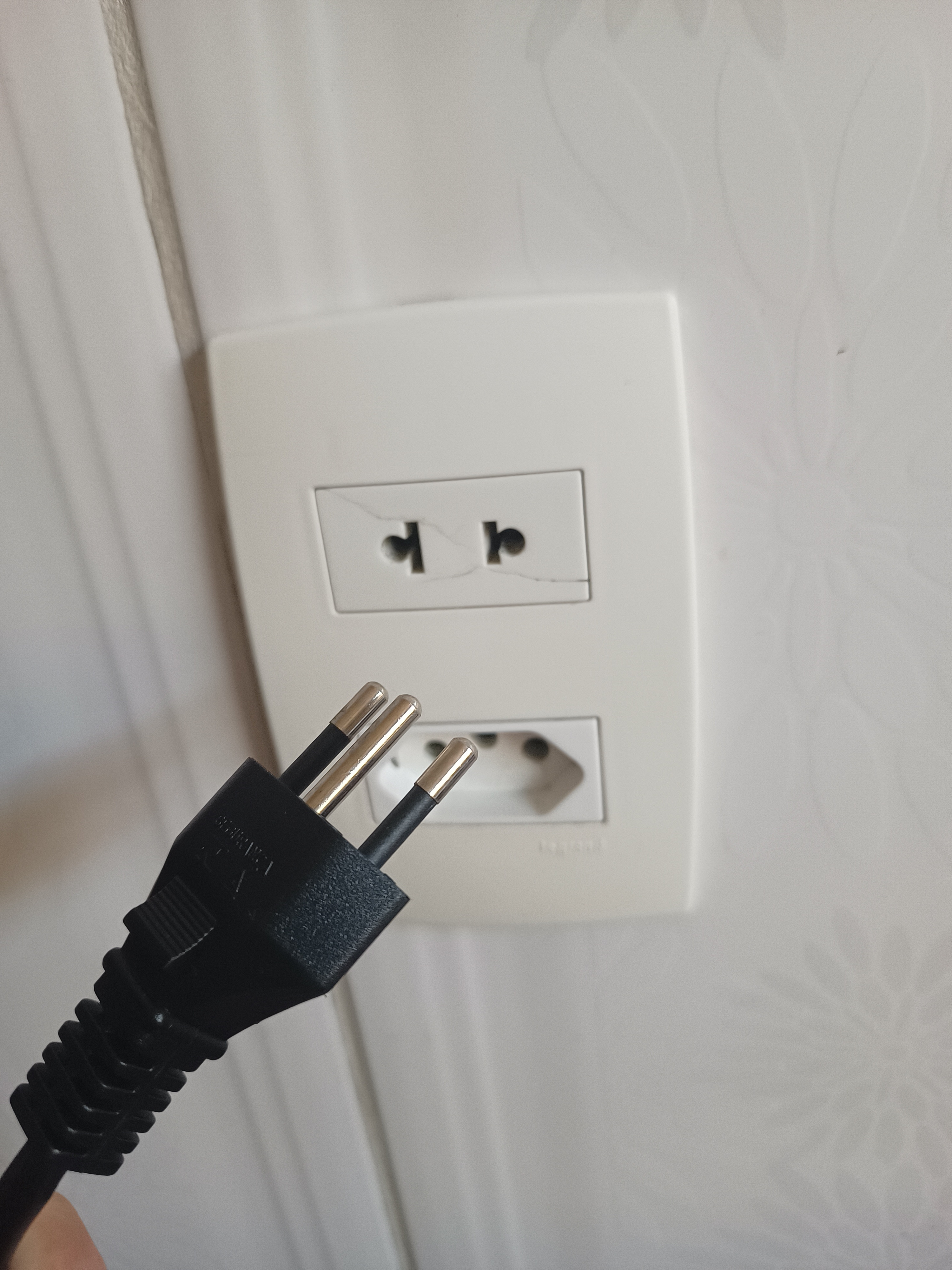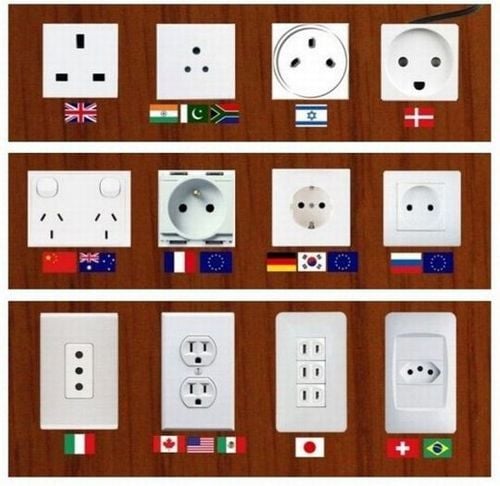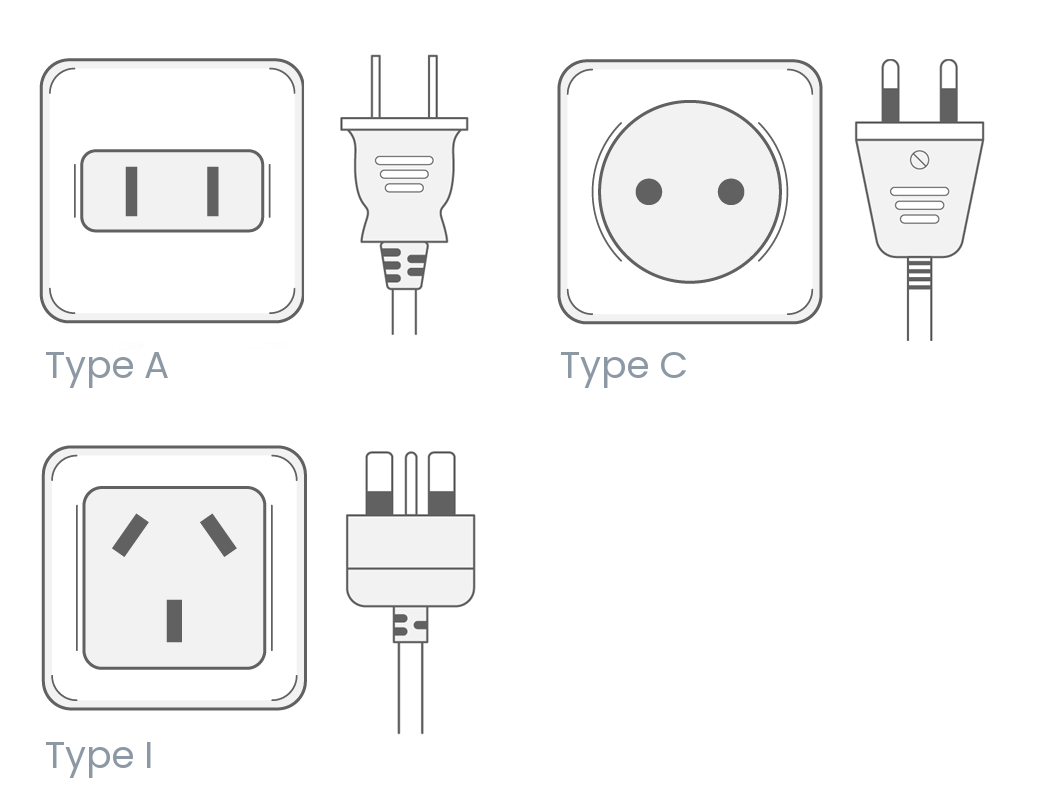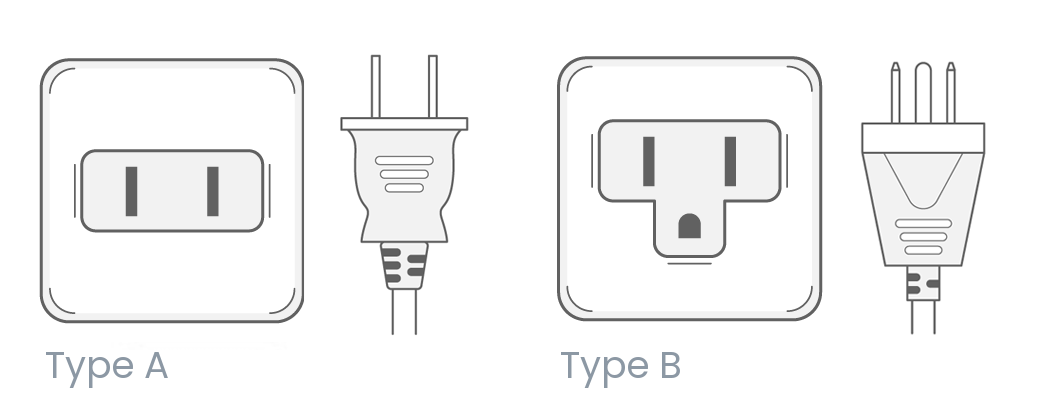Fun watch related to your pic https://youtu.be/udNXMAflbU8
Fuck yeah, technology connections.
I knew it would be before I clicked. Alec is great!
summary: the holes are almost never (purposely) used to secure the plug in the socket. it is often just for manufacturing reasons (but not always, as in this case). it is included in the specifications as an optional feature, so that the holes are not made too big, or in the wrong place.
I’m curious why he doesn’t talk about all the patents that specify locking as a feature. Even modern patents reference the features of older ones in their designs if they use them.
He used all modern plugs you would find on houses in 2000+, of course none of them lock the old way. Go grab some from the 20s and 30s.
In the cheap one, we have two perfectly flat brass pieces pressing against each other.
I’ll bet you any ammount you want, that’s not brass. It’s iron with brass coating.
Is a brass coating not, technically, a flat brass piece pressed against another?
LOGIC’D
Here is an alternative Piped link(s):
https://piped.video/udNXMAflbU8
Piped is a privacy-respecting open-source alternative frontend to YouTube.
I’m open-source; check me out at GitHub.
I knew exactly what video you linked before I clicked it.
I am very familiar with Alec. Love that channel.
There is no finite life span on any connector.
You obviously haven’t used a Cannon or a Neutrik made XLR connector. I have one from the 1970s, it still works like a chram.
Also, take a look at some of the Type F power plugs. If that’s not robust, IDK what is.
I’m not American, but I’ve lived a few years in the US. I find it very interesting that the US invented the electric infrastructure that we use today, but they really screwed up a few things. Firstly, the connectors are far too unsafe. They are flimsy and have no protection from electrocution. Secondly, by using 120V as the main voltage, you need more current to do the same amount of work as a 240V system. Thay means thicker wires, more stress on the plugs, and greater fire hazards.
Shuko plugs FTW
It’s not surprising. If you’re first to adopt something by the time you realize how it could be improved you’re locked into what you did. It happens with all kinds of early adoption. I noticed it a lot in Japan which picks up tech really quickly but as a result has been left with a bunch of crufty old systems. Like they were way ahead on contactless payment, but now they have a bunch of complex and confusion payment systems and lots of them don’t support credit cards while the rest of the world just has contactless credit cards.
Common misconception about the voltage though, the US does have a 240v system (well in houses, some places have three phase power which gets weird). The breakers can be wired to give 120v or 240v. The large appliances like driers or electric car chargers and things that do need a large ampunt of current get wired up for that. It’s really only a slightly slower electric kettle to deal with as a minor inconvenience. Or maybe if you wanted an absolutely enormous electric space heater or something, but those are dangerous as it is. Not a lot of things used need more than the 1800 watt maximum. As far as I can tell it’s just a relic of history, Edison ran his generators at about 110v originally and that’s the voltage original light bulb filaments wanted and higher voltage filaments weren’t used until after the US had already been electrifying to a good extent. Theoretically 120v might be a little safer from a getting shocked standpoint, but electrocutions are pretty rare as it is, just a historical artifact and not a conscious design choice as far as I can tell (and yes, volts do matter too, not just amps. Especially if what’s being shocked has very high resistance, like human skin).
Technology connections has a fun video on this too in addition to the plug hole video someone linked elsewhere: https://youtu.be/jMmUoZh3Hq4?si=4a1SCYOZUy-1z2h_
I’ve used electric kettles in the US and Europe and they’re barely slower. I think the difference is overstated. It’s often used as the reason that fewer Americans have kettles but I think the real reason is just that Americans drink fewer hot beverages other than coffee, and most people have a machine for that.
While 120v is safer for shocks I think the greater safety reason for 240 is lower fire risk which is more common and dangerous that shocks in either system.
just get a hot water tap. boiling water on demand for serious tea consumption.
Great for french press too.
The induction range will make the electric kettle moot anyways.
Here is an alternative Piped link(s):
https://piped.video/jMmUoZh3Hq4?si=4a1SCYOZUy-1z2h
Piped is a privacy-respecting open-source alternative frontend to YouTube.
I’m open-source; check me out at GitHub.
yeah but it looks like a funny face!
I didn’t know that schuko plugs are the norm for most Europe countries, I thought it was a German thing

https://en.wikipedia.org/wiki/SchukoAlso the french system is compatible with Schuko, so that makes it even more universal.
Yeah I don’t know why we don’t make the switch in France as it wouldn’t be that much of a change
It would be from a financial standpoint. Changing a standard this widely implemented is very costly.
Why change it if they’re compatible anyways? Most devices in the eu are designed to accomodate both, its just a question of the earth pin being different.
I’ve travelled all across europe, coming from a country with the french style outlets. I never had any problems connecting anything except for Switzerland and Italy, because they stuck to their own (inferior) standard thats not compatible with anything else.
The smaller devices like chargers and small lamps have a euro plug that can plug in schucko, danish, italian, swiss, french (but not british)
You’re right, I forgot about that. But good luck plugging your laptop or hair dryer in without some janky adapter.
A laptop you can plug in all of Europe. But a hairdryer you cant because (at least mine) uses a schucko plug (but without ground so wtf)
I feel like the US has a very strong resistance to change regarding standards.
The 110v for example used to be the norme in France, but they changed it to 220v in the 50’ and then 230v in the 90’.
Same thing for the plugs, the paper size, the measurement system …
I think “US doesn’t use the metric system” is really overblown. Sure some common things like miles and weights and cooking that people use every day are still done with standard units. But you could say that about many other countries that are “officially” on the metric system. You can’t really force people to stop using units they’re familiar with. Any product I can think of in America is required to have both metric and standard units labeling it. Technical fields like science and medicine don’t touch standard units, would be ridiculous. All metric. If you tell your doctor your weight in lbs it’s instantly converted to kg and that’s what’s used in the system (dosing is done in mg per kg bodyweight often). Every kid in America learns how to use the metric system in school. Construction is probably the big place where it still gets iffy, but even then you can easily get metric or standard bits and things like that. Like what do people want to say we’ve “converted?” Slap all the current cooking/measuring cups out of people’s hands that say both mls and cups, saying no how dare you use cups to measure out the water for your recipe, here have a measuring cup with only mL labeled instead, you’re welcome.
Also ripping out and replacing the entire electrical system of every building in the United States, and scrapping every 120v electrical appliance in the entire country, seems like it would be horrifically expensive and wasteful for some very minor benefits. Maybe a switch could have been made early on in the development of the electrical system, but that ship has sailed. And you can wire up outlets in America for 240v plugs too, the breakers let you do both. So if you need more current for your clothes drier or another large appliance for instance it can be done.
Standard is alive and well in engineering and architecture. We have slugs as a unit. g is ~32ft/s^2 and buildings have feet.
I fucking hate the slug unit. Evil little bit of science.
I’ve heard that a lot of countries still have a bunch of legacy infrastructure that was on the older standards too, worldwide. Studd like the widths of plumbing pipes and such. I think the digital era is probably the easiest time to convert. When I drive across the border, the change to metric is effortless on a digital car. Same for basically everything else, 24h time, temperature, etc.
Converting to metric would mean using it in normal speech. You know, like in most civilized countries.
“What’s your height?”
“187 centimeters.”
While the US system gets called 110/220, my house actually puts out ~242v. Right now I have a smart plug saying 121.5v.
And since you mentioned the word “plugs”, here are our 220 15a and 20a outlets.


120/240 is the nominal voltage in North America. 110/220 is archaic/colloquial/wrong.
And the standard includes a plus or minus that I don’t remember: it’s unreasonable to expect an exact voltage and everything is built with that in mind
Many people from other countries fret about the unsafe plugs in the US. They of course do not have the same level of safety, but it also doesn’t appear to matter. I have never been shocked inserting or removing a US plug. I don’t know and haven’t heard of anyone who has. People do get shocked, but for other reasons.
I have, but I was a child and very much not plugging it in the right way. It was in a very cramped space I couldn’t see, and dumbass me thought holding the metal would give me better control. It did, I made it into the plug.
Ok, so there are people out there doing it.
Did you die? I wonder about the truth behind the idea that getting shocked with 120v is less likely/hazardous than double that
I did, in fact die. God is real, but it’s complicated. Eat your vegetables. Your mom was always proud.
As a kid I used a metal tool to cut a live wire 220v-240v wire and besides getting scared by the jolt I was fine. Probably because the protection circuits kicked in
As an idiot, I’ve gotten shocked by 120v multiple times and 240v once. That hurt a lot more. Hopefully I have survived long enough so far to be less of an idiot
The one time I’ve had an issue with our plugs (that would have been solved by something like the British plug design) was when I wasn’t paying attention to a remote antenna resting on top of a loose plug. Accidentally caused a short that melted that little bit of wire but nothing else happened. Just had a black spot on that outlet from then onward.
I have shocked myself on one once but just like with the other person replying that was as a child and felt more like a learning experience to not mess with outlets.
This is exactly why I like having “upside down” US plugs where the ground pin is on top. If there’s a ground pin in the plug, it prevents pennies and paperclips from falling onto the hot and neutral pins. Unfortunately, this isn’t as common because 1. Some contractors beleive it’s illegal, 2. Many wall wart adapters and lay flat plugs assume the receptacle goes ground pin down, and 3. It doesn’t look like a shocked face.
If your plug is not plugged in completely flush with the wall power point so a penny (or etc) can fit between the plug and powerpoint and yet the power can get through, then there is something very wrong.
It happens all the time across the country. Crusty metal debris and Light-pressure low-surface area contact can cause a hot burning short before tripping the breaker. The contact is also inconsistent as it melts and breaks contact, further delaying the breaker trip before it falls back down. There’s literally a tiktok challenge with plenty of burnt outlets, plugs, and pennies available for your viewing pleasure
Type J > Shuko
Type J is safe and a better implementation. I don’t know why the EU didn’t choose type J as a standard.
It cant plug both ways
I think the distinction is we don’t use general purpose 240v receptacles. We only use them as dedicated circuits for built in major appliances. Historically that was sufficient.
We also don’t really use 20a outlets. I don’t know why, especially now that we require 20a circuits in a few places, but you rarely see 20a outlets or appliances with 20a plugs, even though a lot of small appliances could benefit from a little extra power
So is there really a need? Electric kettles are a perfect scenario but what else? Most other use cases for 240v are “built in” appliances not likely to move (welder, air conditioner, laundry, range, etc). Space heaters and hot plates are already dangerous enough that allowing double the current seems like a hazard
Space heaters and hot plates are already dangerous enough that allowing double the current seems like a hazard
You’d require half the current for the same wattage at 240v. At most, it’s the same 15a max, with double the voltage.
Tbh I think I’d rather achieve the same heat output by running them at 240v using less current instead of 110v and pulling as much current as possible/permitted (15a).
Insulation is cheaper than actual conductors too. Higher voltage and lower current means thinner conductors with more insulation to protect them. You’d also remove complexity and thus cost by only needing one voltage. No need for a split phase supply.
I think 240v would be a better option. 🇨🇦
u fool if the plugs functioned consistently and were made intelligently that might cost extra money and would DEMOLISH the rich peoples pockets we cant have that. who’s gonna profit off my taxes?
On your first point, the plugs have improved quite a lot in the last 10 or so years. Still not enough compared to most other Western standards, and it’s taken to long. But they have improved.
…Just in time for USB plugs and sockets to start taking off. Though I’m not sure how big a deal those are when it comes to safety.
Americans plugs are very strange
And Japanese and Canada and Mexico. Don’t forget about our homies.
European plugs are too big and bulky for our liking.
I’m used to this kind of guy

That’s different than what my French friend brought over. Aren’t they usually quite bulkier? The ends on her chargers were large round bulky things, with the 3 narrow prongs sticking off. What she had also matched the European adapters I see sold at the electronics store here.
This one is Brazilian
deleted by creator
Ah yup! The French one is exactly what I was thinking of. I didn’t realize that there are different outlets in different EU countries. That’s gotta be annoying when traveling.
It’s impossible to short the US ones too. Plugs only go in one way if they’re polarized, or if they’re grounded. Some devices aren’t polarized and they can be plugged in right side up, or upside down.
deleted by creator
Looks Swiss, but I see down the thread that Brazil uses a similar type.
Either way, the Swiss plug feels to me like what if you took the modest CEE 7/16 Europlug and grafted a ground pin onto that.
South Africa also adopted the type N socket
That’s horrible: only one is grounded? A grounded plug can only use half your outlets? Surely to multi-use outpost can also support grounded plugs?
It’s because the installation is old, new ones are always grounded
The holes are only for manufacturability.
Older receptacles had a design that would hug the holes to hold the plug in place. It’s a holdover for people with older houses.
I think this fact is actually a myth, the holes are for manufacturing as stated previously.
Not exactly a myth, but likely never used for retention purposes as was originally intended. See more here: https://electronics.stackexchange.com/questions/11495/nema-5-15p-blade-holes
Older receptacles and even modern receptacles and cords do still make use of their holes.
It’s why if the holes are included there is specs they must follow.
This plug makes use of the holes for a solid mechanical connection that will only be removed when you pull on the collar to remove the pin that goes through the holes.
If it’s for manufacturing why are some made without them?
Theres patents out there, I don’t know why technology connection did his own experiments on modern plugs instead of a modicum of research about receptacles.
Not exactly sure, I think it’s just one of those things were we “people” have gotten so used to the design and how it’s supposed to look, that even if it’s not needed we keep doing it.
Since multiple companies manufacturer plugs and connections, some manufacturers may not need the holes as a part of the assembly process. Other may opt not to add them as they do not have a purpose (other then how we perceive a north america plug is supposed to look like).
Funny story, almost all standard north america three prong plug are installed upside down. The third “center prong” or “ground” is actually on the top per the original design.
Most new builds and electricians are opting to install this way now. The orientation has no impact on performance.
Except that if a plug falls out, you want it to stay grounded… meaning the ground should absolutely be on the bottom because gravity.
the ground should absolutely be on the bottom because gravity.
Not necessarily. You typically want the ground longer so it’s the first in and last out. Type G has the ground on top. I vaguely remember hearing that’s because if it comes slightly out and something sharp or metal falls on the plug, you want it to hit the ground and not the live part…but I don’t know how reliable that story is.
This is the reason, yeah, at least according to what I’d read on Wikipedia (I’d just learned this “funny story” myself a few minutes before reading the comment above). I wanted to see if there was anything that could confirm it, but I’m not paying $70 to purchase the standard (NECA 130-2010) where it may be written.
Some electricians started doing it since it became a viral Internet trend to intentionally drop quarters onto the prongs of a slightly pulled out plug.
In history there’s only been a few cases of a fires being started because of an accidental thing falling on the plugs. The breaker trips before a fire would start in almost all cases. Provided the breaker isn’t faulty or something. Which you should be testing regularly as a home owner.
There’s patents with these features specified for locking and even modern patents reference these old patents.
Technology connections got it wrong, it happens.
deleted by creator
Here a plug that utilizes the holes to make a secure connection that can only be removed by pulling on the collar to remove the pins that go through the holes.
Yeah it’s a thing and if you have the holes in the plug, they must meet NEMA spec since it actually is used for locking in lots of cases. Despite technology connections missing the patent and specs from their videos.
What sources did tech connections have other than their wrong and biased experiment on modern receptacles that wouldn’t have this feature?
I’ve watched that video, what research and sources? He doesn’t talk about any specs or provide them, doesn’t talk about patents or provide them. Can you link to his sources if you know where they are?
It’s strange how he’s being treated as the end source, while not having any sources at all.
Look up NEMA specs and patents, it’s not my job to educate people who are taking someone’s word without sources or anything. His experiments are flawed his receptacles are all from the last 2 decades.
“Go try it yourself and you’ll see”… sure I’ll use a plug from the era that these are from, that’s who these are for, not for people with modern plugs who would be ones watching a video and trying this.
Funny thing about that, TC recently released a video on this as well.
https://youtu.be/vNj75gJVxcE?feature=shared
TL;DW: Ground on top probably causes more problems than it would solve.
Here is an alternative Piped link(s):
https://piped.video/vNj75gJVxcE?feature=shared
Piped is a privacy-respecting open-source alternative frontend to YouTube.
I’m open-source; check me out at GitHub.
“I like a snug plug” - Dusty Slay
Like the european ones still have?
https://youtu.be/udNXMAflbU8?si=vKhkE-pKhltLJ_dF
Not all of them do.
This is the first thing that came to mind. If you didn’t link it, I was lol. I love this channel.
“especially people who notice they have holes in them” ahahahhaha I love him. He’s so good, I can never tell if he’s in on the joke or not.
I don’t even need to click the link to know who this is.
Here is an alternative Piped link(s):
https://piped.video/udNXMAflbU8?si=vKhkE-pKhltLJ_dF
Piped is a privacy-respecting open-source alternative frontend to YouTube.
I’m open-source; check me out at GitHub.
I always thought the holes were there for OSHA lockout/tagout locks.
They are a byproduct of the manufacturing process. There’s a Technology Connections video about it that I’m too lazy to lookup on my phone.
Technology connections got it wrong. The oldest receptacle he used was from the 2000s. He also didn’t do any research. Modern manufactures keep doing it for the all the old receptacles out there. It’s why the hole size IS specified by NEMA if you are going to include them.
Theres plenty of patents that specify the locking function, and even some modern patents refer to those old locking features with their features.
I was bored enough to look up the link
https://www.youtube.com/watch?v=udNXMAflbU8Here is an alternative Piped link(s):
https://www.piped.video/watch?v=udNXMAflbU8
Piped is a privacy-respecting open-source alternative frontend to YouTube.
I’m open-source; check me out at GitHub.
You’re a hero. I even remember watching this video a few weeks ago but I still can’t remember what he taught us the holes are for.

Denmark’s looks happy to supply power
I love that Danish one, always happy to see me!
USA plug should be flipped. The ground should be on top.
Not really. Most plugs I see have ground at the bottom and there’s no official standard for orientation.
Yes, except all bulky plugs are designed for plugging into an outlet with the ground at the bottom.
No. Ground is on the bottom. Almost always. Unless it’s sideways.
Then just take it out and flip it around. It’s not hard. Just turn off the the circuit at the junction box first.
What is this, the outlet denier?
I mean, if the US is gonna steal basically everything from the UK, they might as well steal their power outlet designs since they’re that good.
Oh wait, they just started doing that by forgetting to punch holes in their own power plugs? Hmm, I wonder when they’ll make the next step.
I am prepared for the massive amount of downvotes that the Muricans will throw at me because I said that.
This is a plug for China. It will work fine in US outlets but it’s intended for that Chinese market hence the lack of holes.
While potentially true - that is not why the holes are missing.
They aren’t part of any spec.
It’s a holdover from older designs, modern receptacles hold the plug differently, older ones were designed to hug the holes to hold the plug in places.
Does China use a compatible electrical system to us?
No. 220v/50hz in china, 120v/60hz in North America.
The plugs are similar though, with china using the non-polarized and un-grounded version of the plug used in North America. (two flat blades, same width as Americas live pin) If you didn’t know better, you could plug in the wrong things in either country.
Thus what is shown can not be for China, because there is ground?
Yup, that’s a North American plug.
The grounded outlets that they do use have slanted live/neutral pins like Australia:

Taiwan actually uses the North American plug design too, but at 110v/50hz.

Some electronics may tolerate that, but many won’t function or may even be damaged by the change in frequency.
Type B looks like an ape that just got some bad news
deleted by creator
I lost my manufactured-for-the-US Surface Pro charger while living in Taiwan, got a replacement Taiwan 110V/50hz adapter that I’ve used for years with no issues. Is that the norm? No idea.
(And, never fear, the Surface Pro runs Linux now so no Microsoft hate needed at this particular moment.)
Most (no all) first party chargers will run on 240v or 120v. Read the fine print on the plug or power brick to see what range it’s in.
This is also why laptop charger for example will work as long as you have the adapter for your plug or the OEM cable with the correct plug for your power brick.
Good to know thank you.
AFAIK most “chargers” can deal with a wide range of voltage and frequency. They’re basically transformers that are transforming AC to the desired DC voltage and the mechanism at least my Ankor chargers use seems to work at pretty much any reasonable range (read any country’s implementation) of AC voltage and frequency.
I see thanks for the explanation.
Throw it out. It’s not safe to use.
The holes don’t actually do anything. https://youtu.be/udNXMAflbU8
Here is an alternative Piped link(s):
https://piped.video/udNXMAflbU8
Piped is a privacy-respecting open-source alternative frontend to YouTube.
I’m open-source; check me out at GitHub.





























